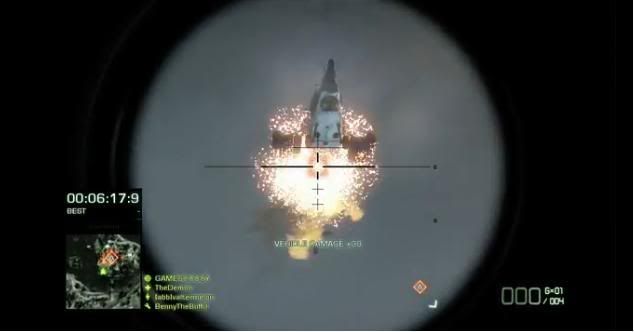
After making our lives miserable for the past 90 minutes, the A.I.-controlled Apache helicopter finally goes down. My team looks up at the smoldering wreck to revel in our victory, and our hearts sink simultaneously. We barely see the small army of paratroopers before they've killed us. It's our sixth time trying to complete the "Isla Inocentes" objective in Battlefield: Bad Company 2's cooperative Onslaught mode, and we can't catch a break.
We gleefully jump back in for a seventh futile attempt.
I'm not a patient person when it comes to difficulty in video games. I've been known to shout profanity at my TV, throw controllers, and punch my pillows after unfair or repeated failure. By my own logic, I should've left Onslaught behind as soon as I realized how frustratingly difficult it is.
Instead, the challenge is what keeps me coming back.
Bad Company 2 is my favorite first-person shooter for numerous reasons — killer multiplayer and class progression, to start — but I had no desire to pay for downloadable content that didn't add anything new. Your sole objective in Onslaught is to capture control points, so it offers nothing structurally new, and developer DICE didn't add any new maps. Also, Onslaught's four-player co-op cuts the number of players by 20.
I purchased Onslaught for my Xbox 360 so my friends would stop telling me to do so. After our first match, I convinced myself I'd made a terrible purchase. Old maps, old objectives, but an unfair increase in difficulty? We'd died before even laying eyes on the first control point.
As we played on, it hit me: Onslaught is supposed to be an entirely different kind of Battlefield experience. This isn't the same balls-to-the-wall action I expect out of Bad Company — this is closer to Rainbow Six than it is Battlefield. Well, if the Rainbow boys used rocket launchers instead of silenced pistols.

Onslaught requires a considerably more careful, thought-out approach to each attack than Bad Company traditionally encourages. I still blew big holes in walls, but only when things got heated. My team crouch-walked instead of sprinted toward objective markers; we masked our approach with smoke grenades; and we sniped enemy soldiers simultaneously to avoid alert.
My friends and I changed our playstyle, communicated, and cooperated in a way I've never seen in Bad Company 2. And then we started winning.
The enemy A.I.'s behavior differs from the campaign in that they're substantially smarter and more aggressive in Onslaught. In Bad Company 2's single-player game, bad guys crouch behind fences and take potshots at you. Here, they flush you out of hiding with grenades, tanks, or coordinated infantry teams of four or more.
A significant reason you need to play carefully is the longer respawn time. When dying puts you out of the game for 15 seconds — almost triple the default time in the Rush or Conquest multiplayer modes — you do your damnedest to stay alive. When you drop dead, you're dealing a brutal blow to your team — if they can't revive you, they have one less guy to help them stave off an attack. Or they have to hide until you're ready to respawn, allowing a large number of enemies to close in on their position.
Onslaught's difficulty isn't unreasonable, and that's why completing its missions is so satisfying. You're overcoming a genuine challenge. You're making calculated decisions instead of bursting through doors, leaping off rooftops, or wasting grenades on uncertain kills.
I'd happily spend the $10 on any game with the cajones to change its fundamentals this drastically — even if it makes me want to chuck a controller from time to time.

